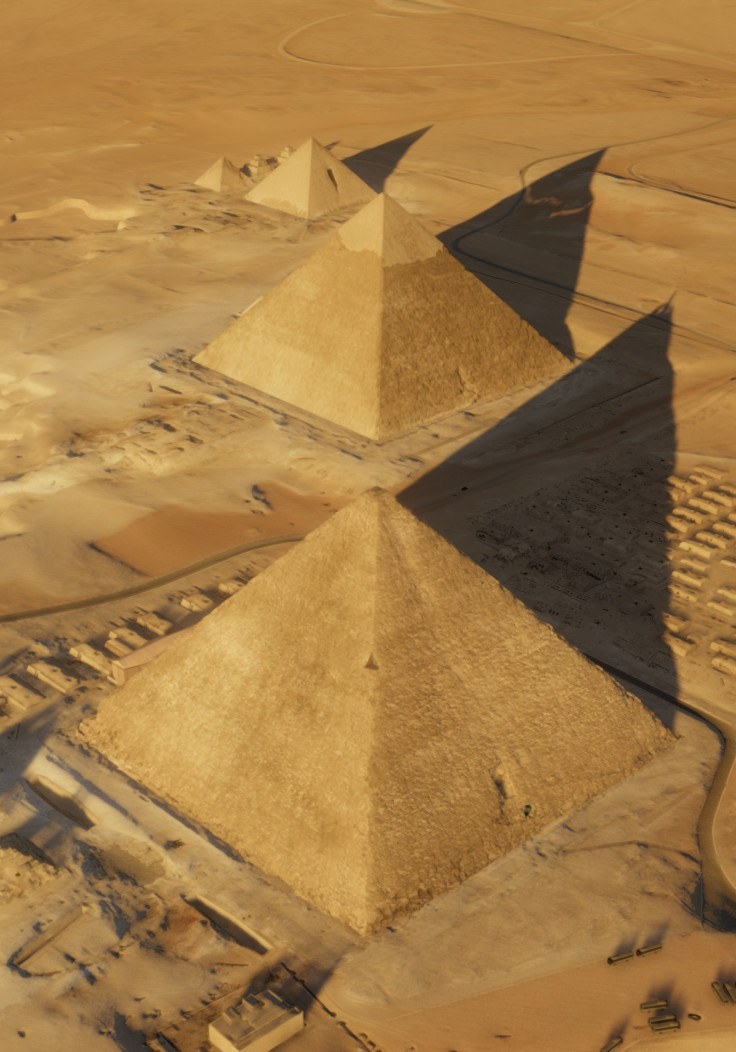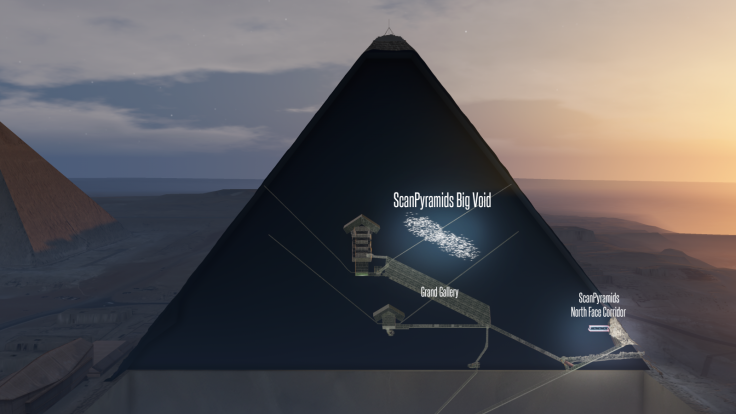Ancient Egypt: A giant hidden void has been discovered deep inside the Great Pyramid of Giza
The Great Pyramid is the only one of the Seven Wonders of the Ancient World that is still intact.
A large, hidden void has been uncovered deep inside the Great Pyramid of Giza with the help of a state-of-the-art imaging system which can 'see' through stone.
An international team of researchers identified a large internal cavity at least 30 metres long above the Grand Gallery – a steeply slanted passageway which connects two other chambers, known as the 'Queen's Chamber' and the 'King's Chamber'. The finding is described in a new study published in the journal Nature.
It is still unclear what the exact structure and function of the newly discovered void is, but the finding may enable future researchers to understand more about the pyramid and its construction.
"We avoid the word chamber because it is not a chamber, but we know that it is a void," said Mehdi Tayoubi, an author of the study from the HIP Institute in France. "We know that [it] has the same characteristics as the Grand Gallery – which is an 8-metre-high structure, 47 metres long."
"We don't know if the void is made by one structure or several successive structures. But what we are sure about is that this big void is there, that it is impressive and that it was not predicted by any kind of theory."
"We need to understand this void better and I think that Egyptologists and specialists in Ancient Egyptian architecture will provide us with some hypotheses that we can use to try and find an architectural explanation," he said.
At 146 metres tall (479 feet), the pyramid was the tallest building in the world right through into the 19<sup>th Century, and is still one of the largest man-made structures.
It was completed around 2560 BC during the reign of Pharoah Khufu, with construction probably taking 20 years. Even today, the question of how exactly the pyramid was built puzzles experts. The structure is part of the larger Giza pyramid complex, which contains two smaller pyramids, as well as other temples and tombs.

To try and better understand what lies inside the pyramid, an international team of researchers imaged the internal structure using subatomic particles called muons – by-products of cosmic rays which can penetrate stone. As the particles move through stone or air, their distinct trajectories make it possible to distinguish cavities from solid structures.

Tayoubi said the researchers were "very surprised" after the first imaging results came in when they noticed a "very big anomaly", which turned out to be the void.
The new research was part of the ScanPyramids project, led by the HIP Institute and Cairo University, dedicated to exploring the structures of the Old Kingdom Egyptian pyramids using advanced non-invasive and non-destructive techniques, including 3D scanning, chemical emulsion instruments, as well as the muon imaging technique.
Although plans for future exploration inside the pyramid have not yet been discussed, one of the researchers, Jean-Baptiste Mouret, is in the early stages of developing a robot concept which may one day be able to fit through tiny holes drilled into ancient monuments, such as the pyramids, to learn more about their internal structures.





















